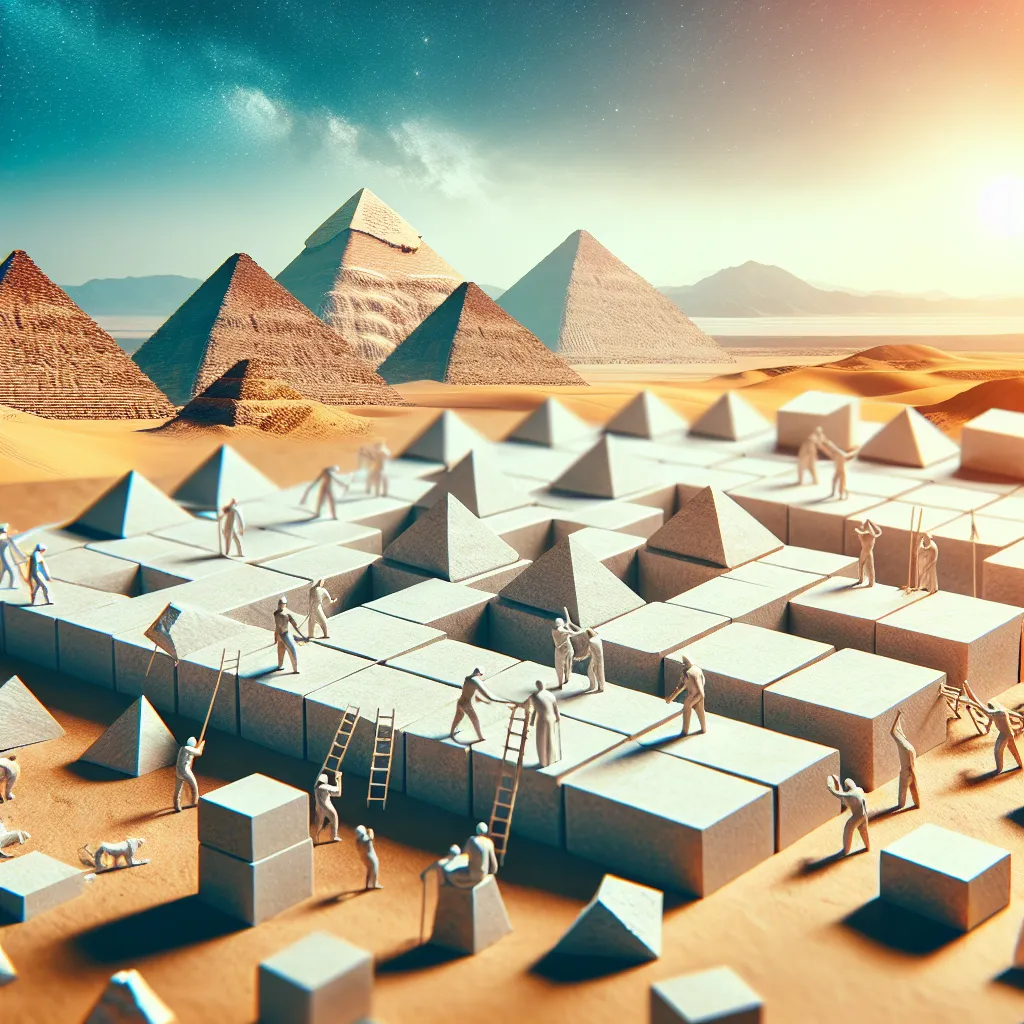The pyramids of ancient Egypt are among the most fascinating structures on Earth, built as colossal tombs of bright white limestone that were intended to hide the secrets of the dead for eternity. These architectural marvels have inspired countless myths, legends, and perplexing scientific questions. How were these towering structures built with such precision? What drove a nation to house its dead so meticulously? And who were the men who moved the billions of tons of stone? Modern science is slowly unraveling these mysteries, piercing through ancient myths to reveal the truth.
Standing like grand sentinels over modern Cairo, these pyramids, constructed over 2,000 years before the birth of Christ, are a subject of endless curiosity for archaeologists. The Egyptians, master’s of stone, built what could be considered the world’s first skyscrapers. Yet, they left no blueprints or detailed records of their methods. Today, the only clues are embedded within the pyramids themselves.
The construction of these extraordinary monuments, including the awe-inspiring Great Pyramid, involved engineering feats that remain astonishing even today. The Great Pyramid, for instance, is 481 feet tall, composed of 2.3 million stone blocks, each weighing up to 50 tons. It was the tallest man-made structure on Earth for almost four millennia. The accuracy of its construction, with sides varying by less than two inches, is remarkable considering the primitive technology available at the time.
Early archaeologists attempted to uncover these secrets with brute force, using dynamite, which likely destroyed as much evidence as it revealed. Today, modern technology is used to probe into the heart of these pyramids, searching for hidden chambers deep within the stone.
The pyramids’ construction did not spring from a single leap of genius. Instead, it evolved over years, filled with trial, error, and near disasters. Beginning with the step pyramid at Saqqara around 2,600 BCE, the design evolved into the smooth-sided, grand structures like the Great Pyramid built by Pharaoh Khufu at Giza. Each phase of pyramid building taught the Egyptians valuable lessons, gradually leading to near-perfection in their design.
One key challenge was aligning the pyramids’ bases to the cardinal points – north, south, east, and west – which they achieved using simple tools and astronomical observations rather than modern digital technology. They might have marked true north by observing the rising and setting of stars, which allowed the Great Pyramid to be aligned to within a twentieth of a degree of true north.
Constructing such a precise and massive structure required an ingenious leveling method. Archaeologists now believe that the Egyptians used water-filled channels as leveling tools, similar to modern spirit levels, to create a perfectly flat foundation. Even more surprisingly, despite having no access to iron tools, they used copper chisels, possibly hardened by impurities like arsenic, to cut the limestone blocks.
The precision of construction extended to every visible stone, with joints so fine that not even a credit card could slip between them. The outer casing of the pyramids, made of high-grade limestone, would have shone brilliantly when newly constructed, reflecting Egypt’s blazing sun.
For decades, it was thought that the pyramids were built by slaves. However, recent archaeological discoveries of workers’ tombs suggest otherwise. The pyramid builders were skilled laborers who were well treated and honored. They were not foreign slaves but native Egyptians who lived in cities built around the construction sites. They were well fed, well organized, and equipped with good medical care. The coordination it took to build these tombs was immense, akin to the modern-day logistical management of large-scale construction projects.
But why were these colossal structures built in the first place? Scholars generally agree that the pyramids served as tombs for the pharaohs, who were thought to become gods in the afterlife. The design and construction of the pyramids were deeply intertwined with Egyptian beliefs about death and rebirth, particularly the journey of the pharaoh’s soul to join the gods in the stars.
Intriguingly, some researchers suggest that the alignment of the pyramids might reflect the stars themselves, particularly Orion’s Belt, which was associated with Osiris, the god of death and resurrection. This celestial alignment might have helped the pharaoh’s soul ascend to the heavens.
Despite these revelations, mysteries remain. Recent explorations have revealed hidden doors and chambers within the pyramids, suggesting that more significant discoveries might lie ahead. Whether these new chambers contain treasure or mummies has yet to be seen.
Today, the pyramids stand as a testament to the extraordinary ingenuity and determination of the ancient Egyptians. Even without modern technology, they built something so enduring that it continues to puzzle and inspire us thousands of years later. The pyramids not only symbolize the immortality of the pharaohs but also the unparalleled creative spirit of their builders. As an ancient proverb says, “Man fears time, yet time fears the pyramids.”






